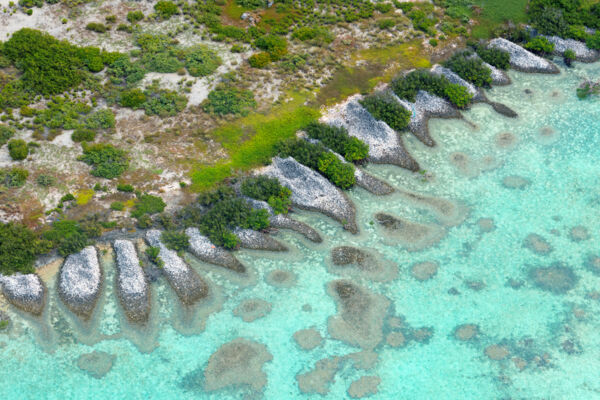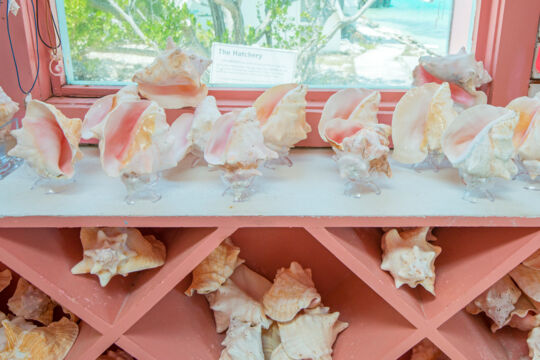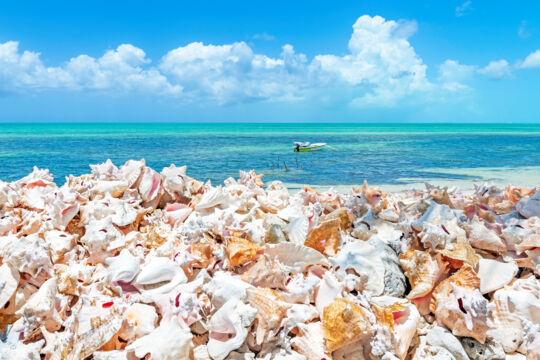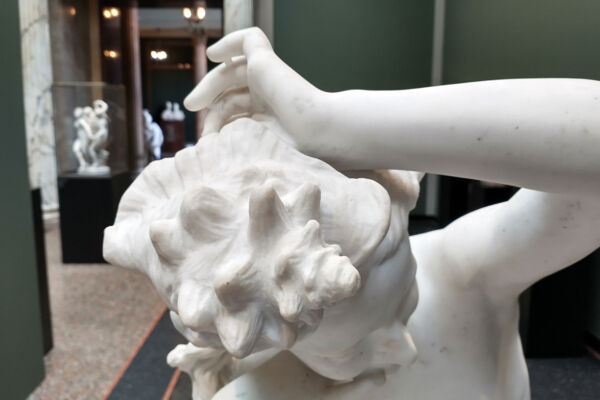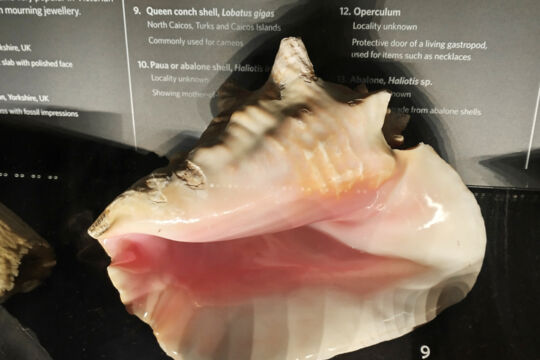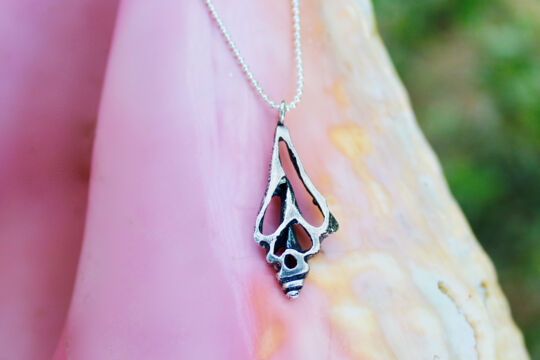Queen Conch
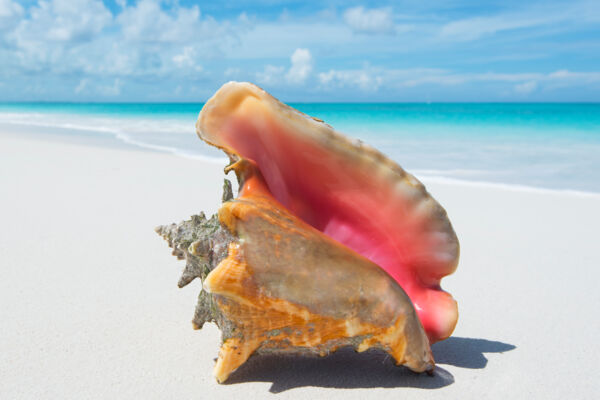
The queen conch is a giant marine gastropod mollusk with a spiral shell. There are a few types of conch found in the Turks and Caicos, yet the queen conch is the best-known, with a close connection to the cuisine, culture, and history of the islands.
Conch is pronounced ‘konk’ (with a hard K sound, and the H is silent). The IPA pronunciation is kɒŋk.
The queen conch (Aliger gigas) has always been an important source of food in the Turks and Caicos, and evidence suggests that the pre-Columbian Lucayans who once inhabited the archipelago actually exported dried conch to nearby islands, including Hispaniola. Today, it’s a staple of many classic local dishes, and the conch name and shell is broadly reflected in the culture of the Turks and Caicos, with places and businesses named after the giant snail and references made in music and art.
| The Queen Conch | |
| Common name | Queen conch |
| Binomial name | Aliger gigas |
| Global conservation status | Vulnerable |
| Conservation status in TCI | Declining population |
| Distribution in TCI | Somewhat common |
| Maximum size | 14 inches (350 mm) in shell length |
Several types of conch are found in the waters of the Turks and Caicos. In addition to the famous queen conch, the king helmet (Cassis tuberosa), horse conch (Triplofusus giganteus), milk conch (Macrostrombus costatus), and hawkwing conch (Lobatus raninus) are also found in the islands. All are often referred to as conchs, although of the four, only the hawkwing conch and milk conch are true conchs.
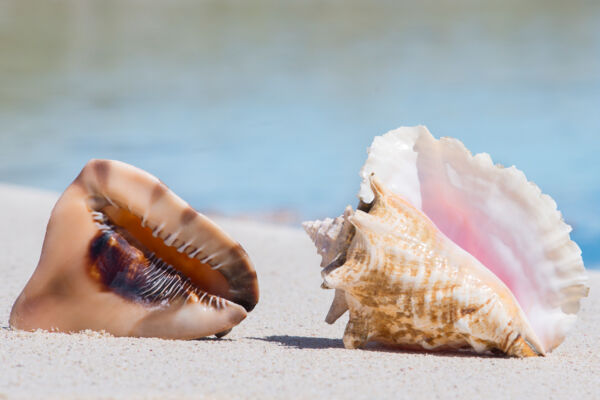
The queen conch’s favored habitat is seagrass beds and sandy ocean floor in depths ranging from 3–60 feet (1–20 m). They can be found at shallower and deeper depths, yet in the former case they are often juveniles, and in the latter case higher densities in deeper depths are typically associated with overfishing. In the Turks and Caicos, the shallow Caicos Banks and the banks surrounding Grand Turk and Salt Cay support the majority of conch in the islands.
The queen conch is a herbivore that feeds on algae and seagrass, unlike some of the other large conch-like species (such as the horse conch) which prey on other mollusks and sea creatures.
Scientific Name of Queen Conch
The current scientific name (binomial nomenclature) of the queen conch is Aliger gigas. The queen conch’s scientific name has changed quite a few times throughout history. From 1758, the giant snail was referred to as Strombus gigas, until 2008 when it was changed to Lobatus gigas. More recently in 2020, the name was updated to Aliger gigas, due to work done by Stephen Maxwell and colleagues, and this current name is now recognized by the World Register of Marine Species.
Extent of Queen Conch
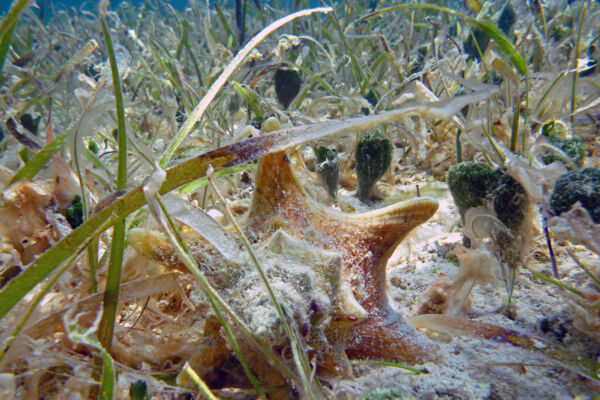
The queen conch is found throughout the tropical and warmer Atlantic and Caribbean, with a range extending as far north as Bermuda and the Florida Keys and as far south as Brazil. In the Lucayan Archipelago, the strongest populations of queen conch are found on shallow marine plateaus, such as the Little Bahama Bank, the Great Bahama Bank, and the Caicos Banks. In the broader Caribbean, large conch populations are typically associated with shallow marine plateaus that are difficult to access and exploit for fishing.
The queen conch is not considered an endangered species by IUCN, but populations are considered at risk by many governments and organizations due to overfishing, with some jurisdictions prohibiting the fishing or harvesting of queen conch (such as in the continental United States). Queen conch are protected under the CITES Treaty, and as such exporting the animal (or the shell) requires a permit.
In the early 1990s, sixteen Caribbean countries exported conch to the United States. Today, only three countries export conch to the United States, one of which is the Turks and Caicos. Conch populations in the Turks and Caicos are under threat due to extreme overfishing. Some conservation efforts have been implemented, yet the overall rate at which the fisheries harvest conch is not sustainable.
The Caicos Conch Farm, which once operated on the island of Providenciales and was the world’s only conch farm, supplied conch for local use and export. Unfortunately, this aquaculture project failed due to the relatively long maturity time for this marine mollusk, along with the relatively low local cost of conch meat, which caused it to never be a highly profitable venture.
CITES and Legal Protections of the Queen Conch
Since 1992, the queen conch has been protected by the CITES multilateral framework, which controls exports and international trade. The CITES regulations regarding conch have been agreed to by many of the countries where conch is naturally found. From the Turks and Caicos, excepting limited quantities of shells and meat for personal use, exporting queen conch products requires a CITES permit. In practice, visitors to the Turks and Caicos are allowed to take three conch shells back home without obtaining a CITES permit.
The Life Cycle of the Queen Conch
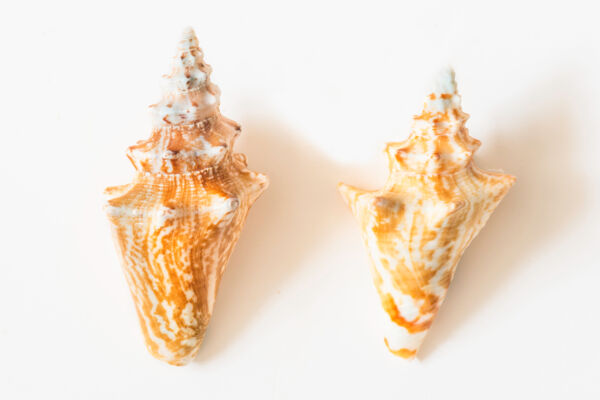
Conchs start life as an egg in an ‘egg mass’, a group of individual strands which are woven together with sand to protect the individual delicate eggs. Each egg mass has approximately 500,000 eggs, but may have as many as 2 million.
Five days after hatching, in the larva phase, conchs are about 500 μm (0.019 inches), and have yet to undergo the metamorphosis stage. This metamorphosis phase occurs around day 18, when the conchs measure around 800 μm (0.031 inches). By day 19, after they have undergone metamorphosis and are in the post-larva stage, conchs are usually about 1 mm (0.039 inches) in size.
For the first year, while they are juveniles (6–18 cm, 2½–7 inches), it can be difficult for them to survive. The conchs are small enough to simply be eaten whole by octopuses and similar predators. Other natural predators are lobster, stingrays, tulip shells, crabs, turtles, and porcupine fish.
Conchs take 3–4 years to mature and become suitable for consumption. They are vegetarian scavengers, which means they scour the sea floor for food, eating mostly algae and detritus. A mature conch shell can reach lengths of up to 35 cm (14 inches). The queen conch can lead a relatively long life, and individuals have been known to live for around 25 years.
Conchs have separate sexes and mate approximately nine times a year, between March and October. Female conchs lay an egg mass that’s typically about 500,000 eggs. In the wild, only one egg out of 500,000 in the egg mass usually matures into an adult. In the Turks and Caicos, there is no closed season for consuming conch (though there is a closed season for exporting it).
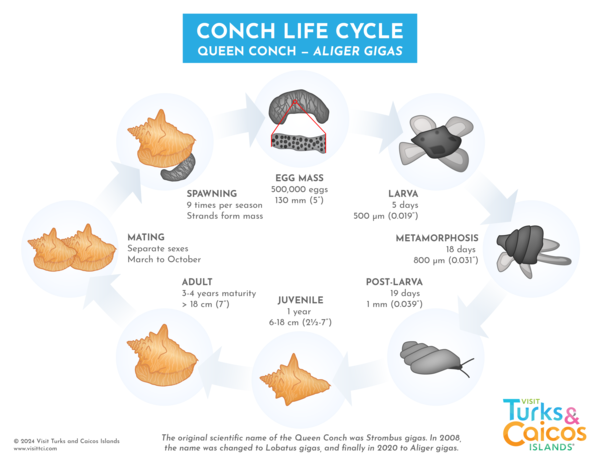
Queen Conch in Cuisine and Culture
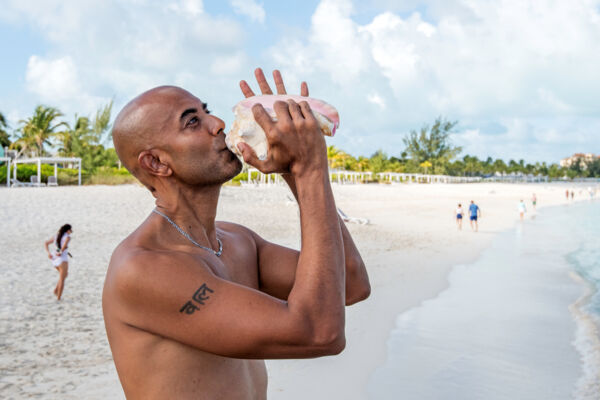
Conch is an important symbol of the Turks and Caicos, being one of three symbols on the Turks and Caicos flag (the other two being a spiny lobster and a Turk's head cacti). Conch shells have been used for decoration and as tools as far back as the time of the first-known peoples in the islands (a Taíno-language people who arrived in the islands around 700 AD). Conch, being an easy source of protein, was a staple food.
In later centuries and into the Victorian era, conch continued to be fished for food, but the shells with their pearlescent lining began to attract interest abroad for decorative and cameos purposes.
Queen conchs produce beautiful shells which are known for their vibrant pink interiors. Unfortunately, to remove the animal from the shell, fishermen routinely crack the top of the shell to break the seal the animal creates and thus be able to pull it from the shell. This ultimately damages the aesthetic value of the shell.
Conch shells can be used as horns or trumpets when cut in a certain way, and the practice of conch blowing can still be seen occasionally to this day. Conch horns can be found for sale around the islands, although it’s a bit tricky to properly blow a horn sound.
Conch shells also saw industrial uses in the earlier days in the islands. The Lucayans used crushed shells in their Palmetto ware ceramics, and later Loyalist settlers would grind and burn the shells to create a cement for plaster, stucco, and mortar use.
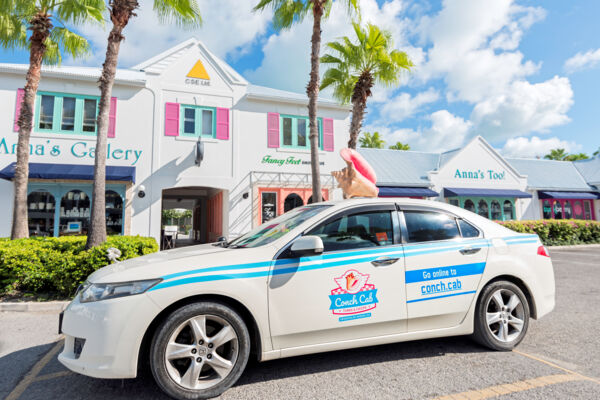
Due to the extremely hard nature of the shells, broken shells have been used to line the tops of walls to prevent people climbing over, much like what is done with broken glass.
Conch pearls are rare but do occur. They form in much the same way as a clam pearl, albeit with more irregular shapes. Colors range from pinks and whites to yellow, peach, and even a light orange.
The conch is represented in many ways across the Turks and Caicos, from popular restaurants such as Da Conch Shack to businesses (Konk Apparel) and places such as Conch Cay and Conch Ground on South Caicos. Conch boat is a generic term for the small and sturdy motorboats used by local fishermen.
Conch as Food
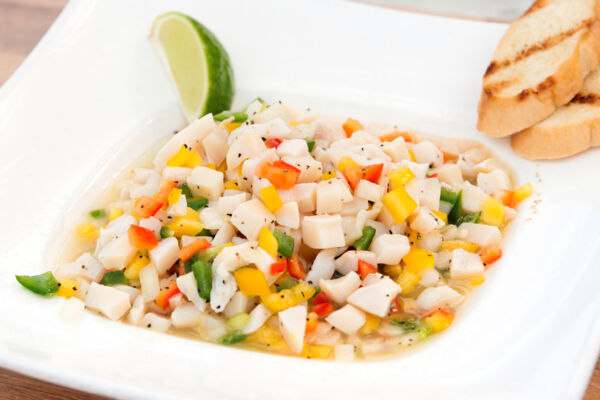
Conch is an integral part of local cuisine in the Turks and Caicos Islands, and there’s a wide range of classic dishes that incorporate conch. Some notable examples include conch salad, conch fritters, cracked conch, and conch chowder.
Traditionally, fried foods such as conch fritters and cracked conch were not a common part of the Turks and Caicos diet, so the seafood, both fresh and dried variants, would often end up in stews and soups. Such stews and soups would often be slow-cooked for hours, and the remaining burnt compound left in the bottom of the pots led to the name of another Turks and Caicos quintessential icon, the potcake dog, a breed of dog that was fed these tough scraps and that has since stolen the hearts of many visitors to the islands.

